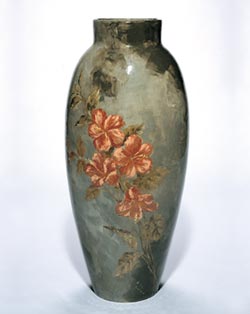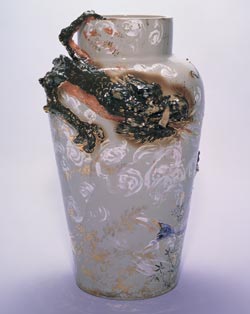|
Glossary
Alumina — Any of several forms of aluminum oxide, Al2O3, occurring naturally as corundum, in a hydrated form in bauxite, and with various impurities as ruby, sapphire, and emery, used in aluminum production and in abrasives, refractories, ceramics, and electrical insulation. Also called aluminum oxide

Art — the conscious use of skill and creative imagination in the production of objects, or works produced

Article — A particular section or item of a series in a written document, as in a contract, constitution, or treaty

Artifact — An object produced or shaped by human craft, especially a tool, weapon, or ornament of archaeological or historical interest

Atom — A unit of matter, the smallest unit of an element, having all the characteristics of that element and consisting of a dense, central, positively charged nucleus surrounded by a system of electrons

Audience — The spectators or listeners assembled at a performance, for example, or attracted by a radio or television program

Ceramics — Any of various hard, brittle, heat-resistant and corrosion-resistant materials made by shaping and then firing a nonmetallic mineral, such as clay, at a high temperature

Character — The combination of qualities or features that distinguishes one person, group, or thing from another

Clay — A fine-grained, firm earthy material that is plastic when wet and hardens when heated, consisting primarily of hydrated silicates of aluminum and widely used in making bricks, tiles, and pottery

Climax — The point of greatest intensity or force in an ascending series or progression; a culmination

Compare — To consider or describe as similar, equal, or analogous; liken

Complication — A confused or intricate relationship of parts

Compound — A combination of two or more elements or parts

Contrast — To set in opposition in order to show or emphasize differences

Culture — The totality of socially transmitted behavior patterns, arts, beliefs, institutions, and all other products of human work and thought

Decomposition — Separation into constituents by chemical reaction

Durable — Capable of withstanding wear and tear or decay

Element — A fundamental, essential, or irreducible constituent of a composite entity

Erosion — The group of natural processes, including weathering, dissolution, abrasion, corrosion, and transportation, by which material is worn away from the earth's surface

Exposition — A statement or rhetorical discourse intended to give information about or an explanation of difficult material

Expository Writing — the composition of a statement or rhetorical discourse intended to give information about or an explanation of difficult material

Fire — A rapid, persistent chemical change that releases heat and light and is accompanied by flame, especially the exothermic oxidation of a combustible substance. To bake in a kiln: fire pottery

Flux — A substance that aids, induces, or otherwise actively participates in fusing or flowing

Folktale — A story or legend forming part of an oral tradition

Genre — A category of artistic composition, as in music or literature, marked by a distinctive style, form, or content

Glaze — A thin smooth shiny coating

Historian — One who writes or compiles a chronological record of events; a chronicler

Kiln — Any of various ovens for hardening, burning, or drying substances such as grain, meal, or clay, especially a brick-lined oven used to bake or fire ceramics

Man made — Made by humans rather than occurring in nature

Material — The substance or substances out of which a thing is or can be made

Moral — Of or concerned with the judgment of the goodness or badness of human action and character

Natural — Present in or produced by nature

Observe — To be or become aware of, especially through careful and directed attention; notice

Papier�Mache — A material, made from paper pulp or shreds of paper mixed with glue or paste, that can be molded into various shapes when wet and becomes hard and suitable for painting and varnishing when dry

Periodic table — A tabular arrangement of the elements according to their atomic numbers so that elements with similar properties are in the same column

Plot — The pattern of events or main story in a narrative or drama

Residual — The quantity left over at the end of a process; a remainder

Resolution — The state or quality of being resolute; firm determination

Sedimentary — resembling or containing or formed by the accumulation of sediment; "sedimentary deposits"

Setting — To fix firmly or in an immobile manner

Silica — A white or colorless crystalline compound, SiO2, occurring abundantly as quartz, sand, flint, agate, and many other minerals and used to manufacture a wide variety of materials, especially glass and concrete

Silk — A fine lustrous fiber composed mainly of fibroin and produced by certain insect larvae to form cocoons, especially the strong, elastic, fibrous secretion of silkworms used to make thread and fabric

Silver — This metallic element as a commodity or medium of exchange

Texture — A structure of interwoven fibers or other elements

Vase — an open jar of glass or porcelain used as an ornament or to hold flowers

Vessel — hollow utensil, such as a cup, vase, or pitcher, used as a container, especially for liquids

Wood — The secondary xylem of trees and shrubs, lying beneath the bark and consisting largely of cellulose and lignin

|







